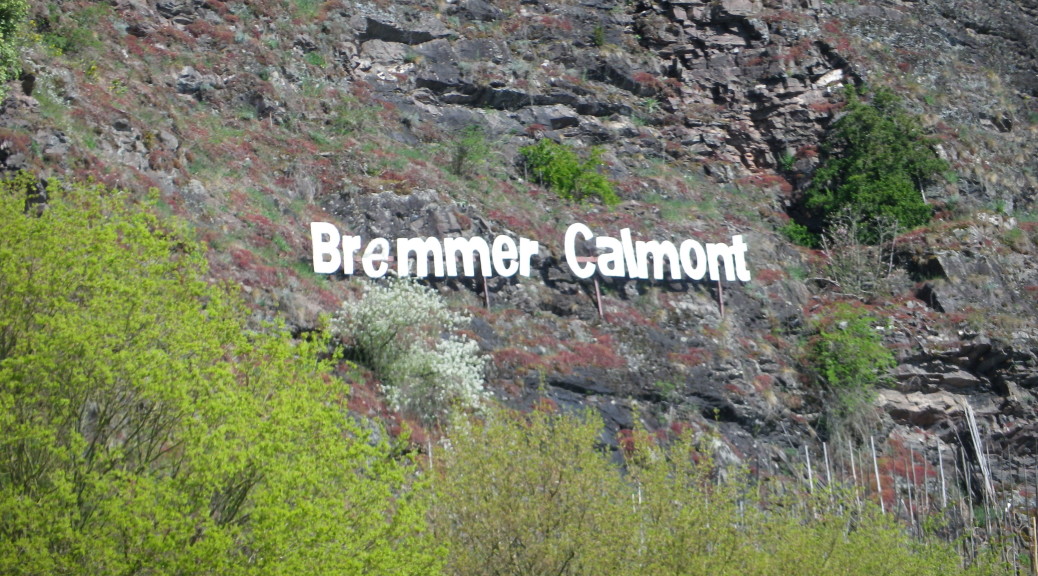What I Learned:
Germany’s Moselle River region is as an important wine-producing area in Germany as the Rhine region. It is the oldest wine producing region in Germany.
Germans refer to the Moselle sections as Upper, Middle and Lower, beginning at the French-Luxembourg border, and continuing to Koblenz downriver, in the Lower Moselle section.
The Lower Moselle, also known as the Terraced Moselle, begins at Zell. It is without a doubt the most spectacular area visually: steep slopes rise from the river edge, as the Moselle twists and turns on its way to join the Rhine. This area, from Zell (with the famous black cat), past the famous wine village of Cochem, to the river mouth at Koblenz, boasts some of the steepest vineyards in the world. Hence the need for the narrow terraces which dominate the landscape in the vine-bearing hills of this region.
Because of the steepness and the terraces, the vines in the Terraced Moselle sub-region are mostly all worked by hand, resulting in wines that generally are more expensive than other regional wines.
The Calmont, by the village of Bremm, is the steepest vineyard in Germany, and in Europe, at almost a 65 degree incline! Its terraces cling to the rock-face, which helps to radiate heat from the sun back onto the vines. The earliest vintners knew this, and called the hillside the Heisser Berg, or Warm Mountain. Atop it they constructed a small temple.
Here, the Riesling grape really predominates (whereas in the rest of the Moselle region it accounts for approximately 61 per cent of all cultivated grapes.) In addition to the Riesling grape, other white varietals include Weisser Burgunder (Pinot Blanc), Mueller-Thurgau, and Eibling, most likely the original dominant white varietal here before Riesling.
What I Tasted:
2014 Riesling, Trocken, Qualitaetswein, Weingut Klein-Goetz, Bruttig-Fankel: a dry white wine with a light medium gold color; hints of smoke, honey, green apple and vanilla, mildly acidic.
2013 Riesling, Trocken, Qualitaetswein, Schneiders-Moritz: a dry white wine with medium-light gold color; fruity nose and notes, slight spice, and medium high acidity.
2012 Riesling, Alte Rebe – Aus der Steillage, Halbtrocken, Roman Graeff: a half-dry wine with medium light gold color; slight floral nose, with fruity, and floral notes, and a hint of a spicy-mustard finish.
2012 Riesling, Valwig Rosenhang, Halbtrocken, Kabinett, Weingut Jurgen Steuer: a dry white wine with light gold color; slight floral nose, and notes of green apple; a hint of minerality; a well-balanced crispness.
2012 Riesling, Valwiger Herrenberg, Spaetlese, Weingut Jurgen Steuer: a dry white wine with medium-dark gold color; a floral nose, with complex fruit and floral notes, a velvety mouthfeel; and well-balanced overall.
2011 Riesling, Pomaria, Trocken, Qualitaetswein, Schneiders-Moritz: a dry white wine with a medium-dark gold color; nose of honey and sweet honeydew melon, notes of vanilla, spice, apple with hints of smoke and flowers; amazing flavors in a well-balanced, full-bodied, low acidity white wine.
